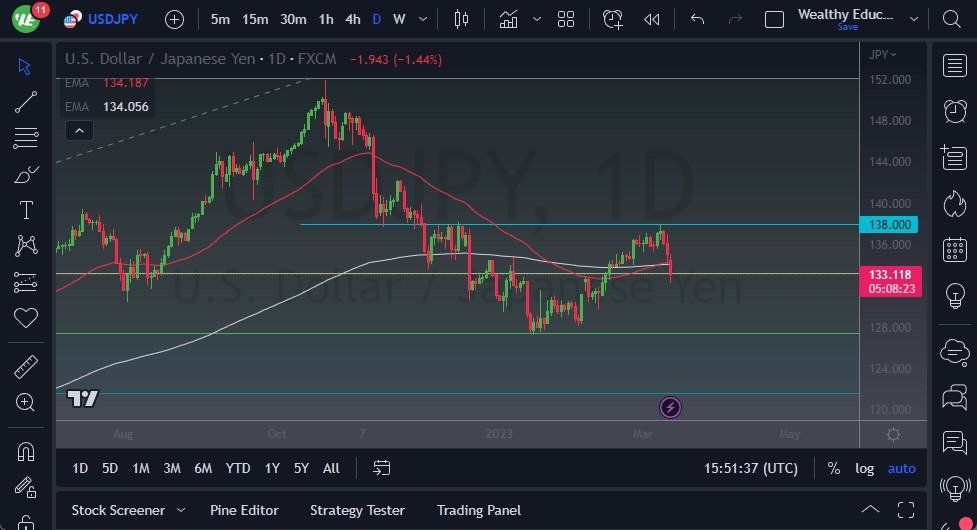The US dollar started the week with some negativity, with the US dollar/Japanese yen pair showing a lot of back and forth movements. The external pressures on this market include the Bank of Japan, which is fighting against rising interest rates in the 10-year yield, resulting in negative pressure on the Japanese yen over the long term as they have to print more currency.
The 50-Day EMA and the 200-Day EMA are both sitting around the middle of the candlestick, but they are relatively flat at the moment. The market will continue to see noisy behavior, but traders should keep an eye on the interest rate market, particularly the 50 basis points level, which was strongly defended. When the 10-year yield in Japan approaches the 50 basis points level, the Japanese yen should start selling off again. Conversely, if interest rates continue to decline, the Japanese yen may pick up some strength. Keep in mind that this goes back and forth on an almost daily basis. Longer-term momentum is still with the US dollar though, as bouncing from the 50% Fibonacci level was a clue from a longer-term standpoint.
Central Banks Have important Decisions to Take
- The Federal Reserve's actions will also play a crucial role in this market.
- If the Fed sounds like it will continue to tighten monetary policy and squash speculation, the US dollar could strengthen.
- However, the market gapped lower at the start of the session, indicating negative sentiment.
The market could drop down to the ¥130 level if interest rates continue to fall globally. However, if interest rates start to rise, the US dollar could go higher. In summary, the US dollar/Japanese yen pair continues to experience a lot of back and forth movements, with the Bank of Japan and the Federal Reserve's monetary policy decisions playing critical roles. The 50-Day EMA and 200-Day EMA are relatively flat at this time, and traders should pay attention to the 50 basis points level, which was defended strongly. If the 10-year yield in Japan approaches this level, the Japanese yen should sell off. Conversely, if interest rates continue to decline, the Japanese yen could strengthen. Ultimately, traders should remain vigilant and monitor the interest rate market, especially the 10 year JGB to make informed decisions in this market. Remember, the Bank of Japan will do everything you can to keep it below 50 basis points, possibly flooding the market with yen.
 Ready to trade our Forex daily forecast? We’ve shortlisted the best Forex brokers list in the industry for you.
Ready to trade our Forex daily forecast? We’ve shortlisted the best Forex brokers list in the industry for you.
